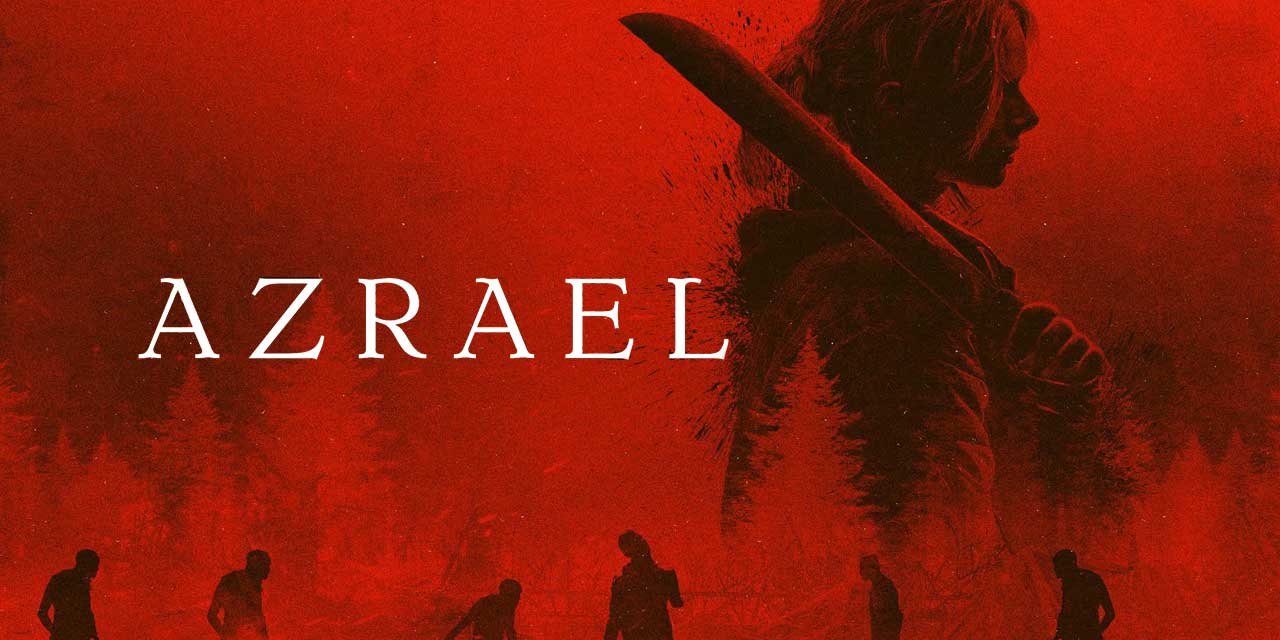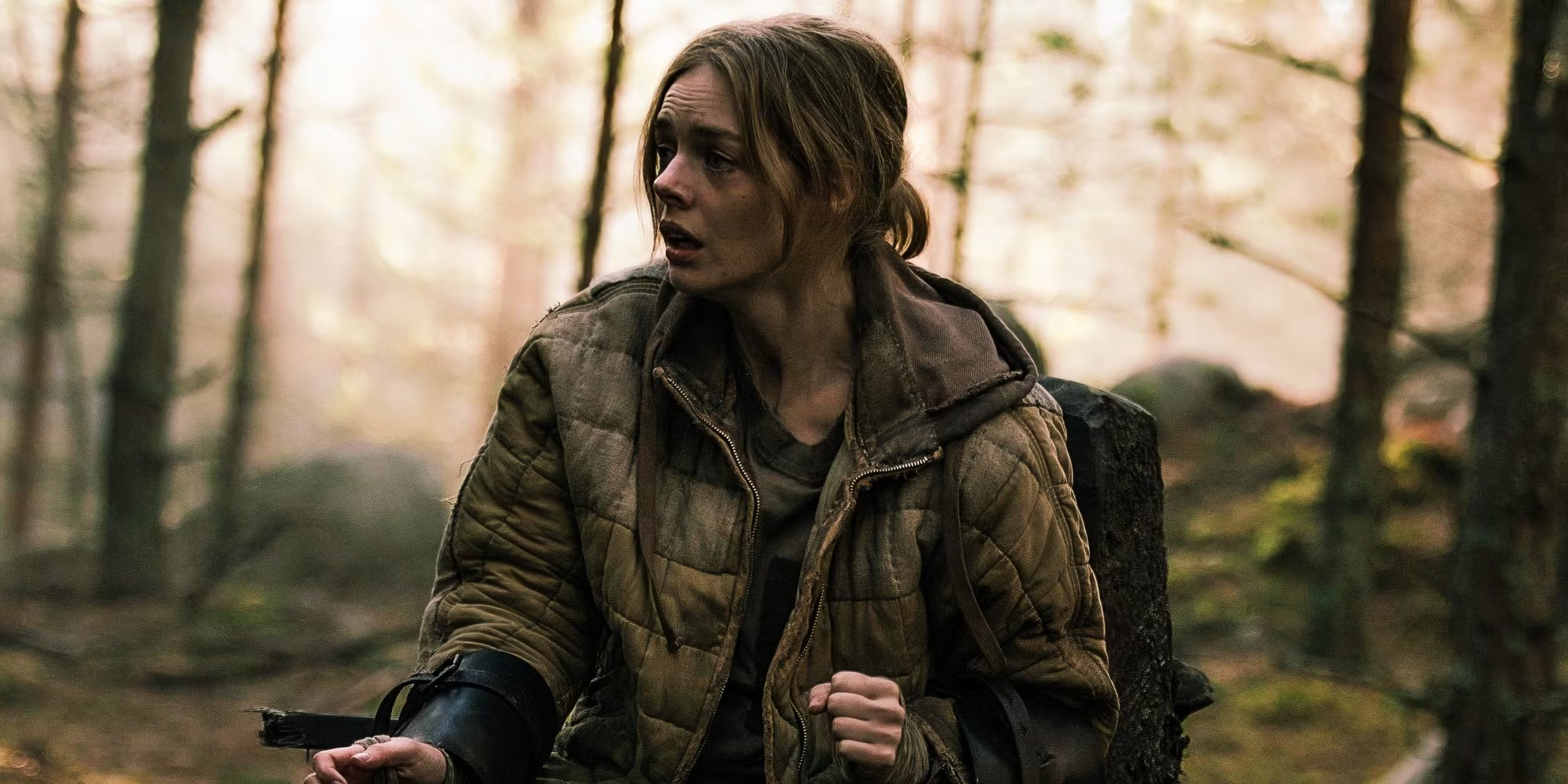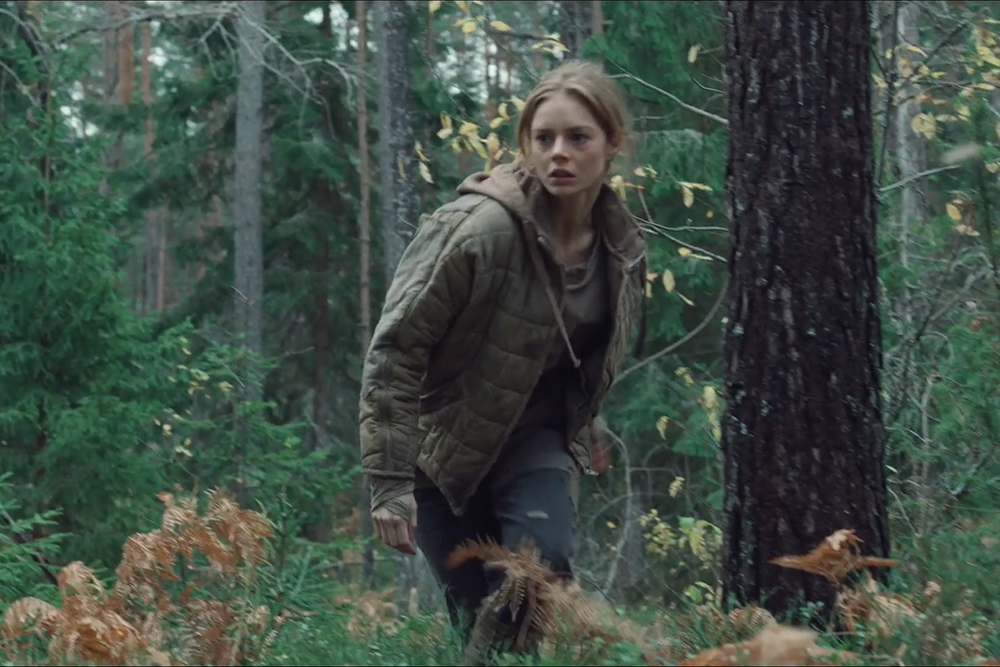E.L. Katz’s Azrael is a gripping action-horror film that follows its protagonist, Azrael, through a dark post-apocalyptic world. Set many years after the biblical Rapture—the final ascension of the righteous to Heaven—the movie presents a world riddled with demonic humanoid creatures known as the Burned Ones. These terrifying beings are relentlessly driven by an insatiable hunger for human flesh. In this bleak environment, survival is a constant struggle, and Azrael, played by the iconic Samara Weaving, stands at the center of this story.
The film begins with Azrael and her lover, Kenan, fleeing through the woods, desperate to escape a cult of survivors. The cult believes speech is a sin and has taken drastic measures—surgically removing their vocal cords in response to their belief that this is why they were not chosen during the Rapture. As the story unfolds, Azrael and Kenan are captured, separated, and tied up in what appears to be a sacrificial ritual. Azrael narrowly escapes the Burned Ones, who almost consume her. However, one of her captors is torn apart and dragged off by these creatures.
The cult’s belief system is rooted in the worship of the wind, which they see as an extension of God. Miriam, a pregnant leader of the cult, interprets the wind’s will for the group. As the film progresses, Azrael finds Kenan nailed to a tree, serving as a sacrifice to the Burned Ones. This discovery leads to her second capture, which she again manages to escape from, albeit with tragic consequences. Her guards and Kenan perish during this escape. Driven by a deep sense of rage and vengeance, Azrael decides to confront the cult head-on.
Upon returning to the cult’s camp, Azrael sets it on fire, using both a gun and a machete to eliminate the survivors one by one. Her bloodbath culminates in a final confrontation with Miriam and her right-hand woman, Josefine. Azrael kills Josefine and mortally wounds Miriam, who unexpectedly gives birth to a monstrous child. Seeing this baby causes Miriam to take her own life in horror. As the Burned Ones swarm the church in response to the baby’s cries, they close in on the scene, signaling the end of the cult’s reign.
Azrael Ending Explained

The film takes a dark turn in its final moments. Miriam’s suicide is not only a reaction to the horrors of the world around her but also a horrifying realization that her child is the Antichrist, a figure deeply rooted in Christian lore. While the canonical Bible does not mention the birth of the Antichrist after the Rapture, many interpretations of Christian texts explore the concept. The Burned Ones, upon hearing the child’s cries, howl in what seems like triumph, suggesting their allegiance to Satan. This grim scene leaves the audience questioning Azrael’s true role in this dystopian world.
Azrael, however, is not fearful. She smiles while holding the baby, seemingly content with what has transpired. This moment is deeply significant, as it points to the true nature of her character and mission. The name Azrael itself provides a clue: in Abrahamic religions, Azrael is often referred to as the Angel of Death, a figure who carries out God’s will by transporting souls to the afterlife. In Azrael, this figure is portrayed not as a mere destroyer but as an agent of divine wrath.
The name Azrael may also reference the 2nd-century Christian text, the Apocalypse of Peter, where Azrael is described as the Angel of Wrath, who metes out punishments to the wicked. This suggests that Azrael’s violent journey is not just about seeking revenge for herself, but perhaps fulfilling a divine mission. Azrael’s smile, then, becomes an expression of satisfaction—she has successfully brought about the birth of the Antichrist, perhaps signaling her role as an agent of divine judgment.

The Cult’s Religious Fanaticism and Why They Targeted Azrael
Throughout Azrael, the cult’s disturbing beliefs form a core part of the story. The followers’ extreme silence is a defining feature of their faith, with speech being regarded as a sin. While the film does not provide a direct explanation for this belief, the most likely reason stems from the cult’s deep-rooted fear of attracting the Burned Ones. These creatures are drawn not only to blood but also to sound, and the cult’s silence may serve as a method to protect themselves from detection.
The cult’s beliefs are twisted versions of Christianity, shaped by the aftermath of the Rapture. In an effort to avoid the same fate as those left behind, they have created a new, more extreme version of faith. The need for complete silence could be rooted in the same mindset as self-flagellation—punishing oneself for perceived sins in an attempt to atone. Yet, this silence is a voluntary practice among the cult members and sets them apart from other survivors in the post-rapture world.
Azrael and Kenan’s flight from the cult is an act of rebellion against their oppressive religious practices. Their departure marks them as targets, and it becomes clear that the cult views them as blasphemous. The cult’s efforts to sacrifice them to the Burned Ones are driven by their belief that Azrael and Kenan represent a threat to their rigid, distorted faith.

The Burned Ones: Agents of Hell or Human Punishments?
The Burned Ones are central to Azrael’s horror, and their true nature remains shrouded in mystery. They are humanoid creatures, resembling burned humans who have somehow managed to survive. While the film does not explicitly explain their origins, it hints at their connection to the Rapture, suggesting that they were created either during or after this cataclysmic event.
The Burned Ones’ insatiable hunger for human flesh and blood, coupled with their brutal methods of killing, points to their possible role as agents of Hell. They seem to exist to punish the wicked, particularly those who were not chosen during the Rapture. However, their tragic appearance—suggesting they were once human—leaves open the possibility that they are suffering a punishment of their own, inflicted by a higher power.
Azrael’s encounter with one of the Burned Ones in a tunnel provides a crucial moment in the film. When the creature smells the blood under her nails, it refrains from attacking her. This implies that Azrael may have unknowingly become a vessel for the Antichrist, making her untouchable to the Burned Ones. This moment of survival provides a key piece of the puzzle, offering a glimpse of Azrael’s true purpose.






